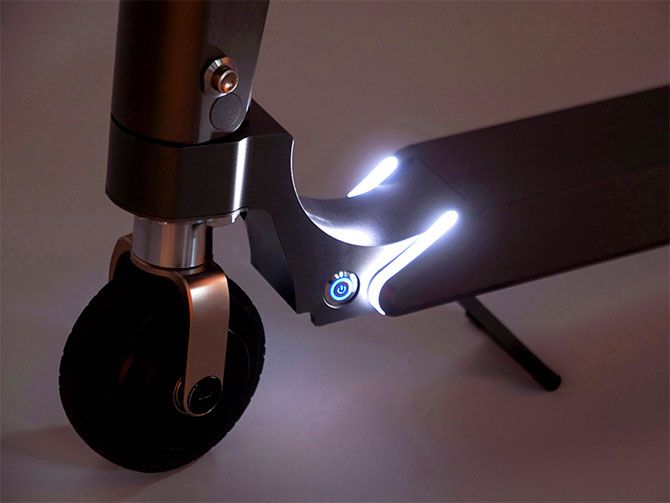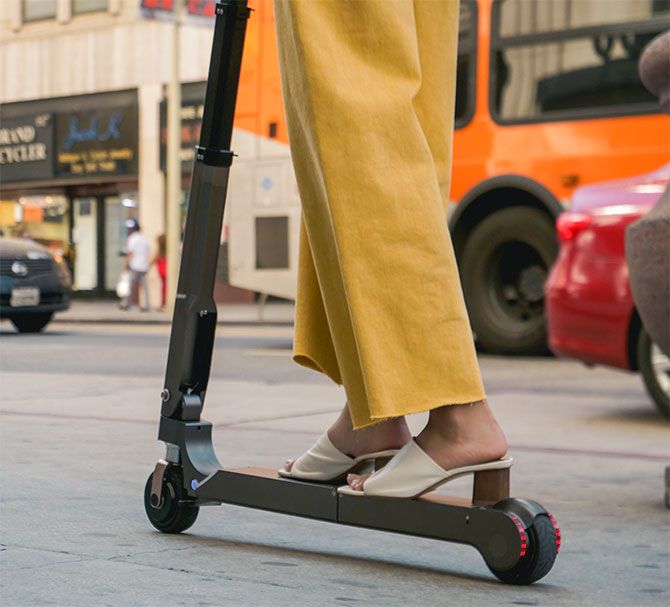When mounted on a vehicle, the scooter is charged automatically using electricity produced while driving, ensuring that the user can complete their journey seamlessly, using the e-scooter to reach their final destination after parking the vehicle.
In a first, Hyundai Motor Group plans to enable first- and last-mile mobility through integrating an onboard e-scooter with Hyundai and Kia vehicles.
When mounted on a vehicle, the scooter is charged automatically using electricity produced while driving, ensuring that the user can complete their journey seamlessly, using the e-scooter to reach their final destination after parking the vehicle.

For this purpose, Hyundai has developed a prototype electric scooter.
Building on its initial concept presented at CES 2017, the new model boasts rear-wheel drive, a highly-capable lithium battery and is equipped with two stylishly curved front LED headlights, and two rear tail lamps.
The latest version of Hyundai’s e-scooter features a 10.5 Ah lithium battery which enables the scooter to achieve a top speed of 20 km per hour and is sufficient to power the scooter for around 20 km on a single charge.

The 2019 model’s shift from front-wheel drive to rear-wheel is key in enhancing safety and stability as it positions the passenger's weight near the rear, the company said. Additionally, the group’s engineers have added suspension to the front wheel to provide a smoother ride, even on rough surfaces.
DongJin Hyun, head of Hyundai Motor Group Robotics Team, said: “This is the vehicle-mounted personal scooter which could be featured in future Hyundai vehicles. We want to make our customers’ lives as easy and enjoyable as possible. Our personal electric scooter makes first- and last-mile commuting a joy, while helping reduce congestion and emissions in city centres.”

Weighing around 7.7 kg, the scooter is highly portable, given its compact tri-folding design.
The e-scooter also features a digital display that shows battery status and speed.










